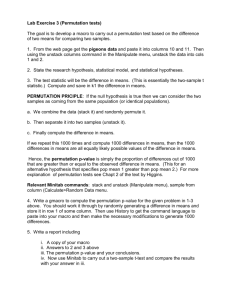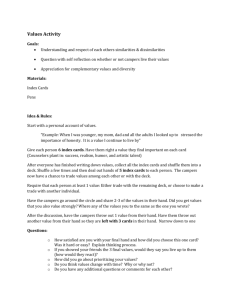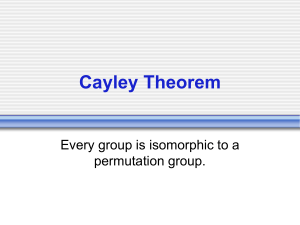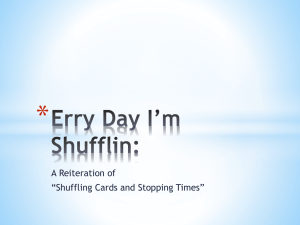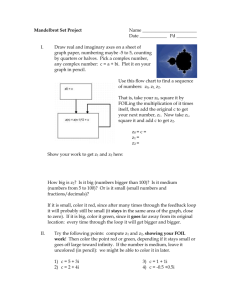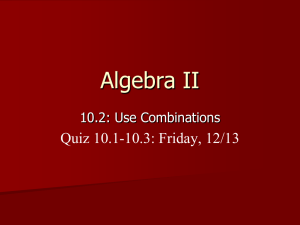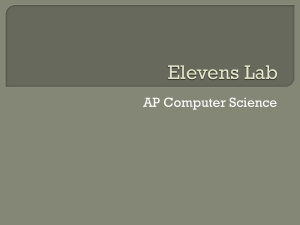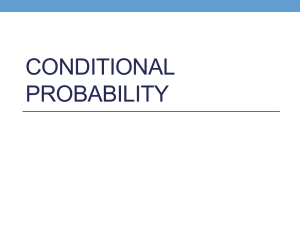Cut the deck at any
advertisement
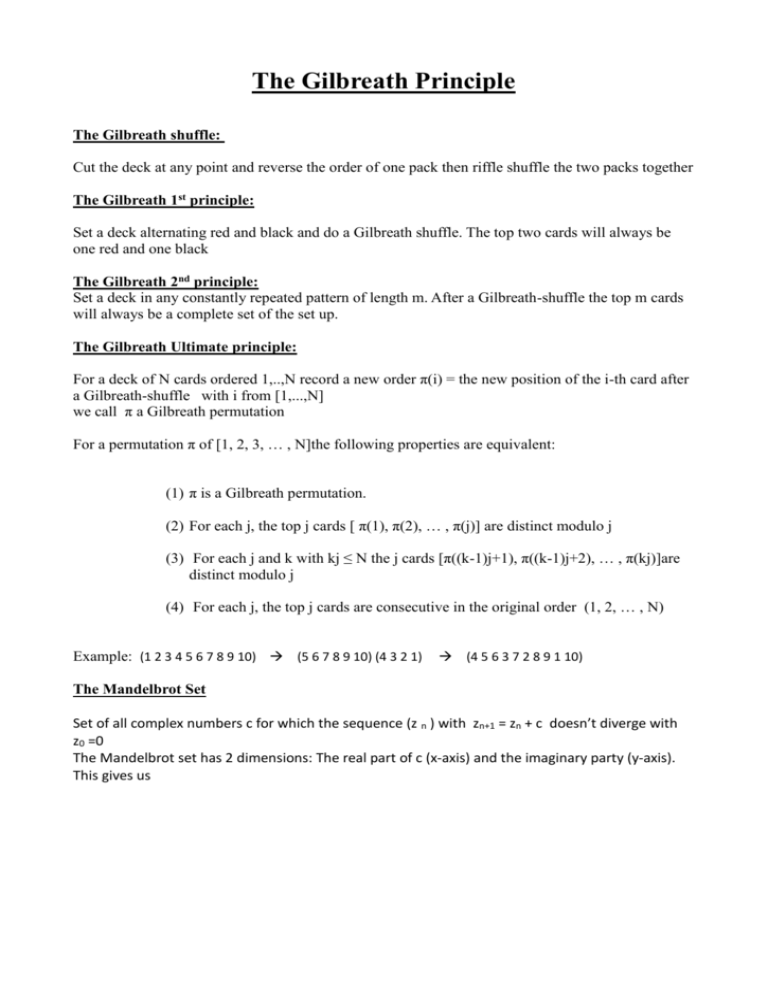
The Gilbreath Principle The Gilbreath shuffle: Cut the deck at any point and reverse the order of one pack then riffle shuffle the two packs together The Gilbreath 1st principle: Set a deck alternating red and black and do a Gilbreath shuffle. The top two cards will always be one red and one black The Gilbreath 2nd principle: Set a deck in any constantly repeated pattern of length m. After a Gilbreath-shuffle the top m cards will always be a complete set of the set up. The Gilbreath Ultimate principle: For a deck of N cards ordered 1,..,N record a new order π(i) = the new position of the i-th card after a Gilbreath-shuffle with i from [1,...,N] we call π a Gilbreath permutation For a permutation π of [1, 2, 3, … , N]the following properties are equivalent: (1) π is a Gilbreath permutation. (2) For each j, the top j cards [ π(1), π(2), … , π(j)] are distinct modulo j (3) For each j and k with kj ≤ N the j cards [π((k-1)j+1), π((k-1)j+2), … , π(kj)]are distinct modulo j (4) For each j, the top j cards are consecutive in the original order (1, 2, … , N) Example: (1 2 3 4 5 6 7 8 9 10) (5 6 7 8 9 10) (4 3 2 1) (4 5 6 3 7 2 8 9 1 10) The Mandelbrot Set Set of all complex numbers c for which the sequence (z n ) with zn+1 = zn + c doesn’t diverge with z0 =0 The Mandelbrot set has 2 dimensions: The real part of c (x-axis) and the imaginary party (y-axis). This gives us The connection between Mandelbrot set and shuffling cards: Only the real part (the x-axis) matter We call c a period n point if the (z n ) from the Mandelbrot set become 0 after n steps. Get c by putting zn=0 for a certain n. (there will always be a real solution since the degree is odd after excluding one c) Consider a period n 0point of a certain length n, call it c. Example: for the period 4 point c = -1.3107 z0 = 0 z1 = (z0 ² + c) = -1.3107 z2 = (z1 ² + c) = 0,4072 z3 = (z2 ² + c) = -1,1448 z4 = (z3 ² + c) = 0 Write down the sequence of this c (starting with 0) and write above this a line the numbers 1, … , n by putting 1 above the smallest number, 2 above the second smallest and so on, call this line (L) In the example: 3 0 1 -1.3107 4 0,4072 2 -1,1448 This gives a “code” for a Gilbreath permutation. Decoding: Start with the 1, now always go one to the left and get another line, write this line under (L) In the example we get In order: 3 1 4 2 (L) 1324 1234 3421 You will get a cyclic permutation. This method will always give a Gilbreath permutation as a result. Sources: Persi Diaconis and Ron Graham: Magical Mathematics: The Mathematical Ideas that Animate Greath Magic Tricks Nicolaas Govert de Bruijn: A Riffle Shuffle Card trick and its Relation to the Quasicrystal Theory http://en.wikipedia.org/wiki/Mandelbrot_set


